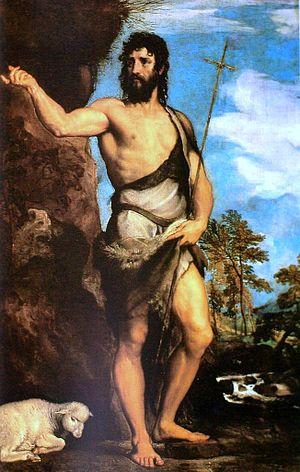words by Gabi Logan
Miguel Falomir, head of the Italian and French painting department at the National Prado Museum in Madrid, Spain, uncovered a previously unknown version of Renaissance painter Titian’s “Saint John the Baptist” (the version you see in the picture is kept in the Gallerie dell’Accademia in Venice) early this month in the “Scattered Prado”, 3,100 works from the museum’s collection housed at other institutions.
A pivotal member of the 16th-century Venetian school, Titian, or Tiziano Vecelli as he is known in Italian, was renowned for his vivid colours and was regarded as a professional equal of Raphael and Michelangelo. While compiling a comprehensive catalogue on Titian’s work, Falomir came across the piece, which is in poor condition after years of neglect and several botched restoration attempts, in a church in Almeria, Spain.
Before this discovery, two distinct versions of “Saint John the Baptist” by Titian were known to the art community, one in the Gallerie dell’Accademia in Venice and the other in St. Lawrence Monastery in El Escorial, Spain. The newly unearthed Titian is distinct from both the versions in Venice and El Escorial, though Matteo Ceriana, director of the Gallerie dell’Accademia, has said that “all three versions are interconnected”.
The newly uncovered piece is currently under the care of the restoration workshop at the Prado, a team of 15 curators and 20 restorers who use X-ray, infrared reflectography, and pigment analysis to uncover the original working methods and underlying artistic form of the pieces they work on. Details of the work on “Saint John the Baptist” will be released in the fall as part of a Prado exhibition on the work and its restoration.
In February, the Prado’s restoration unit uncovered a new version of Leonardo da Vinci’s “La Gioconda” (Mona Lisa) painted by one of da Vinci’s pupils at the same time he was working on the original.













